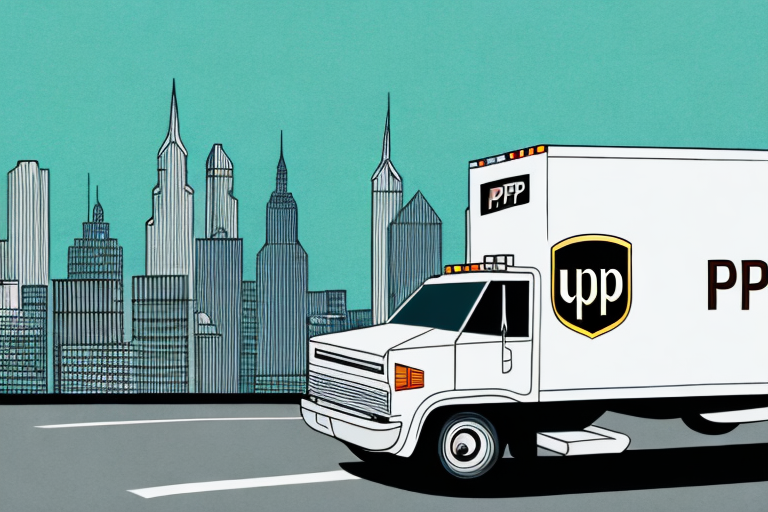How to Negotiate Lower Ground Shipping Rates with UPS
As a business owner, controlling costs is a critical factor for success. One key area where businesses can save significant amounts of money is in ground shipping rates with carriers like UPS. However, securing lower rates is not always straightforward, especially when dealing with a large and established company like UPS. This article provides a comprehensive guide to understanding and negotiating lower ground shipping rates with UPS.
Understanding UPS Ground Shipping Rates
Before entering negotiations, it's essential to understand UPS ground shipping rates. UPS determines their rates based on various factors, including:
- Distance: The distance your package will travel.
- Weight: The weight of the package.
- Service Type: The type of delivery service chosen.
- Additional Fees: Fees such as fuel surcharges, residential delivery fees, and handling fees.
Understanding these components helps in accurately calculating shipping costs and identifying areas for potential savings.
Package Size and Its Impact on Rates
The size of your package significantly affects UPS ground shipping rates. UPS has specific size restrictions, and exceeding these limits can result in additional fees or even package rejection. Therefore, accurately measuring and weighing your packages is crucial to avoid unexpected costs.
Shipping Options and Their Costs
UPS offers various shipping options like guaranteed delivery times and signature confirmation. While these services enhance the reliability and security of your shipments, they can also increase the overall shipping cost. It's important to assess the necessity of these options based on your business needs and customer expectations.
For more detailed information on UPS shipping options, refer to the official UPS shipping services.
Why Lowering Shipping Rates is Essential for Businesses
Lower shipping rates provide a significant competitive advantage by reducing the overall cost of doing business. For small businesses with tight budgets, achieving lower rates is essential to improve profitability. Reduced shipping costs allow businesses to allocate more resources toward areas like advertising, product development, and customer service.
Moreover, lower shipping rates can enhance customer satisfaction. Affordable shipping options encourage repeat purchases, foster customer loyalty, and generate positive word-of-mouth marketing, ultimately driving more sales and revenue.
According to a survey by Statista, shipping costs account for a significant portion of e-commerce expenses, highlighting the importance of optimizing these costs for business success.
Preparing for Shipping Rate Negotiations with UPS
Gathering Data and Analytics
Start by collecting comprehensive data on your shipping volumes, destinations, and historical shipping costs with UPS. This information provides a solid foundation for your negotiation strategy.
Competitor Research
Obtain quotes from competitor carriers to understand the market rates. Comparing these rates with UPS’s offerings can strengthen your negotiating position.
Understanding UPS's Pricing Structure
Familiarize yourself with UPS's general pricing structure and key variables that affect shipping rates. Understanding how rates are calculated enables you to identify potential areas for negotiation.
Analyzing Shipping Needs
Evaluate your shipping patterns to identify opportunities for cost optimization. This could include consolidating shipments, adjusting delivery times, or optimizing packaging to reduce dimensional weight.
Setting Clear Business Goals
Define your business objectives related to shipping. Whether it's expanding your customer base, reducing costs, or improving delivery times, clear goals help in negotiating terms that align with your business strategy.
Determining the Best Time to Negotiate with UPS
Timing plays a crucial role in successful negotiations. Consider the following factors when deciding when to approach UPS:
- Customer Loyalty: Negotiating as a long-term customer can leverage your loyalty for better rates.
- Increased Shipping Volumes: Significant growth in shipping volumes can be a strong bargaining chip.
- Competitive Quotes: Having competitive offers from other carriers can pressure UPS to offer more favorable rates.
Avoid negotiating during peak seasons, such as the holiday period, when UPS may be less flexible due to high demand. Instead, approach negotiations during slower periods when UPS is more likely to consider rate adjustments.
Research industry trends and benchmark your shipping data against industry standards to ensure you are negotiating from a position of informed strength.
Strategies for Building a Stronger Relationship with UPS Representatives
Establishing a strong relationship with your UPS representative is vital for effective negotiations. Implement the following strategies:
- Maintain regular communication throughout the year, not just during negotiations.
- Seek proactive advice and insights on reducing shipping costs.
- Listen to recommendations for improving shipping efficiency.
Providing constructive feedback on UPS services and inviting representatives to visit your facility can lead to more personalized solutions and a deeper understanding of your business needs.
The Importance of Knowing Your Shipping Volume and Destination
Accurate knowledge of your shipping volume and destinations is crucial when negotiating rates with UPS. This data helps in:
- Identifying the most cost-effective shipping methods.
- Planning ahead to avoid delays and issues, especially for shipments to remote locations.
By understanding your shipping patterns, you can negotiate terms that reflect your actual needs and volumes, ensuring more accurate and favorable rates.
Essential Questions to Ask During UPS Shipping Rate Negotiations
Having a list of targeted questions can enhance your negotiation effectiveness. Consider asking:
- What discounts does UPS currently offer on ground shipping?
- What volume discounts are available based on my shipping volumes?
- Are there additional discounts or promotions for new or existing customers?
Additionally, inquire about any extra fees or surcharges such as fuel surcharges, residential delivery fees, and handling fees. Understanding these will help you accurately calculate your shipping costs and negotiate better rates.
Leveraging Competitor Quotes in Negotiations
Using competitor quotes can provide leverage in negotiations with UPS. Gather multiple quotes from other carriers to understand the market rates and use this information to argue for more competitive pricing with UPS.
Ensure that your comparisons are accurate and relevant, reflecting similar services and conditions. This approach demonstrates that you are informed about market standards and are seeking the best possible deal.
The Art of Compromise: Finding Common Ground with UPS Representatives
Successful negotiations often require compromise. Focus on finding mutually beneficial solutions by understanding UPS's needs and objectives. For example, offering a longer-term commitment in exchange for lower rates can benefit both parties.
Effective communication is key. Clearly articulate your needs and limitations while being receptive to UPS's concerns. Building trust and maintaining open communication channels can lead to agreements that satisfy both your business and UPS.
Best Practices for Securing Long-Term Lower Shipping Rates with UPS
Securing long-term lower shipping rates is an ongoing effort. Adopt the following best practices:
- Continuously monitor your shipping volumes and destinations to identify trends and opportunities for savings.
- Regularly obtain and compare competitor quotes to ensure you are receiving competitive rates.
- Maintain a strong, consistent relationship with your UPS representative year-round.
Additionally, optimize your packaging to reduce dimensional weight and take advantage of UPS's technological tools, such as their online shipping platform and tracking systems, to streamline processes and potentially qualify for discounts.
Proven Tactics for Renegotiating Shipping Rates with UPS Over Time
Renegotiating shipping rates periodically ensures that your rates remain competitive as your business evolves. Implement the following tactics:
- Maintain detailed records of how your shipping volume and destinations have changed over time.
- Understand your overall shipping costs and how they align with UPS's pricing structure.
- Set clear negotiation benchmarks and goals based on your current and projected shipping needs.
Regularly review and update your negotiation strategy to reflect changes in your business and the shipping industry.
Monitoring and Ensuring Accurate Billing After Negotiations
After negotiating lower rates, it's crucial to monitor your billing to ensure that the agreed-upon rates and discounts are correctly applied. Follow these steps:
- Review your invoices regularly to verify accuracy.
- Address any billing errors or discrepancies promptly with your UPS representative.
- Ensure that all negotiated discounts and rates are consistently reflected in your bills.
Implementing a routine audit process can help in maintaining billing accuracy and ensuring sustained savings.
Success Stories of Businesses That Have Successfully Negotiated Lower Ground Shipping Rates with UPS
Many businesses have successfully negotiated lower ground shipping rates with UPS by following the strategies outlined in this guide. These success stories demonstrate that thorough preparation, strong relationships, and informed negotiation tactics can lead to significant savings and improved profitability.
By adopting these approaches, businesses can effectively negotiate with UPS to secure lower ground shipping rates, ultimately enhancing their competitive edge and financial performance.




















